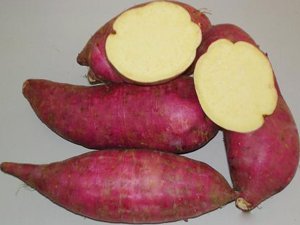I have made the Coconut Vanilla Cupcakes on this blog many times... but hubby always complains they are not quite sweet enough, so I have done some tweaking... and tried out a new icing.
Coconut Vanilla Cupcakes
Makes 12-16 cupcakes, depending on the size of your cupcake papers. Suitable for freezing.
Makes 12-16 cupcakes, depending on the size of your cupcake papers. Suitable for freezing.
- 6 eggs
- 100g (125ml) coconut oil or 100g butter, melted
- 250g (3/4 cup) rice malt syrup
- 1 tablespoon vanilla extract
- ¼ teaspoon liquid stevia (optional)
- ½ (75g) cup coconut flour
- ¼ teaspoon bicarb soda
- pinch of salt (omit if using salted butter)
- Preheat oven to 180 degrees Celcius. Prepare cupcake tray by lining with paper cupcake cases or greasing with oil or butter. (Tip: Double up your cupcake papers if you want them to look pretty after baking.)
- Beat eggs and add coconut oil, rice malt syrup, vanilla extract and stevia. Beat to combine.
- Add dry ingredients (coconut flour, bicarb soda and pinch of salt). Blend until smooth. (You can beat it by hand or use electric beaters or a blender.)
- Pour into well greased muffin tins or into paper cupcake cases and fill to 1cm from the top. The mixture is very runny - I find it easiest to transfer it to a jug and pour it in.
- Bake at 180 degrees Celcius for 20-25 minutes or until skewer comes out clean. Turn off the oven but leave the cupcakes in another 20-30 minutes if you have the time. This will allow them to turn golden and taste more caramel without overcooking. Allow to cool and then chill in fridge before icing.
Pink Coconut Lime Glaze
Adapted from The Urban Poser's vanilla bean lemon glaze.
- 1/3 cup (75g) warmed coconut butter (made from blended shredded coconut or coconut flakes)*, in a pour-able state. (The oil can separate out - make sure it is mixed in to the rest of the coconut butter.)
- 1/4 cup (60ml) rice malt syrup
- 2 teaspoons lime juice
- ½ teaspoon vanilla extract or half a vanilla pod, scraped
- 1 tablespoon juice squeezed from raspberries (I warm frozen raspberries and push through a sieve to extract juice... Or you could just add food colouring if you don't mind eating that.)
- In a small bowl, mix the coconut butter and rice malt syrup till they form a thick paste.
- Stir in the vanilla, raspberry juice and lime juice.
- If needed, stir in some filtered water till desired consistency is achieved.
- Pour onto chilled cupcakes. Spread a little if needed, but you want it to spread out itself a little to look silky smooth.
*Sometimes Woolworths sells coconut butter –
it is labelled “Spiral Foods Coconut Paste” and comes in a box of 5 sachets. You can
probably find it at a health food shop too. To make your own coconut butter, throw
a whole packet (I use 500g) of desiccated coconut into a food processor and
blitz until it turns runny. It may take around 15 minutes, and you will
probably need to scrape the sides of the bowl several times. NOTE: You need to
make a large quantity of coconut butter for the food processor to handle it.
There are plenty of ways to use it up!













